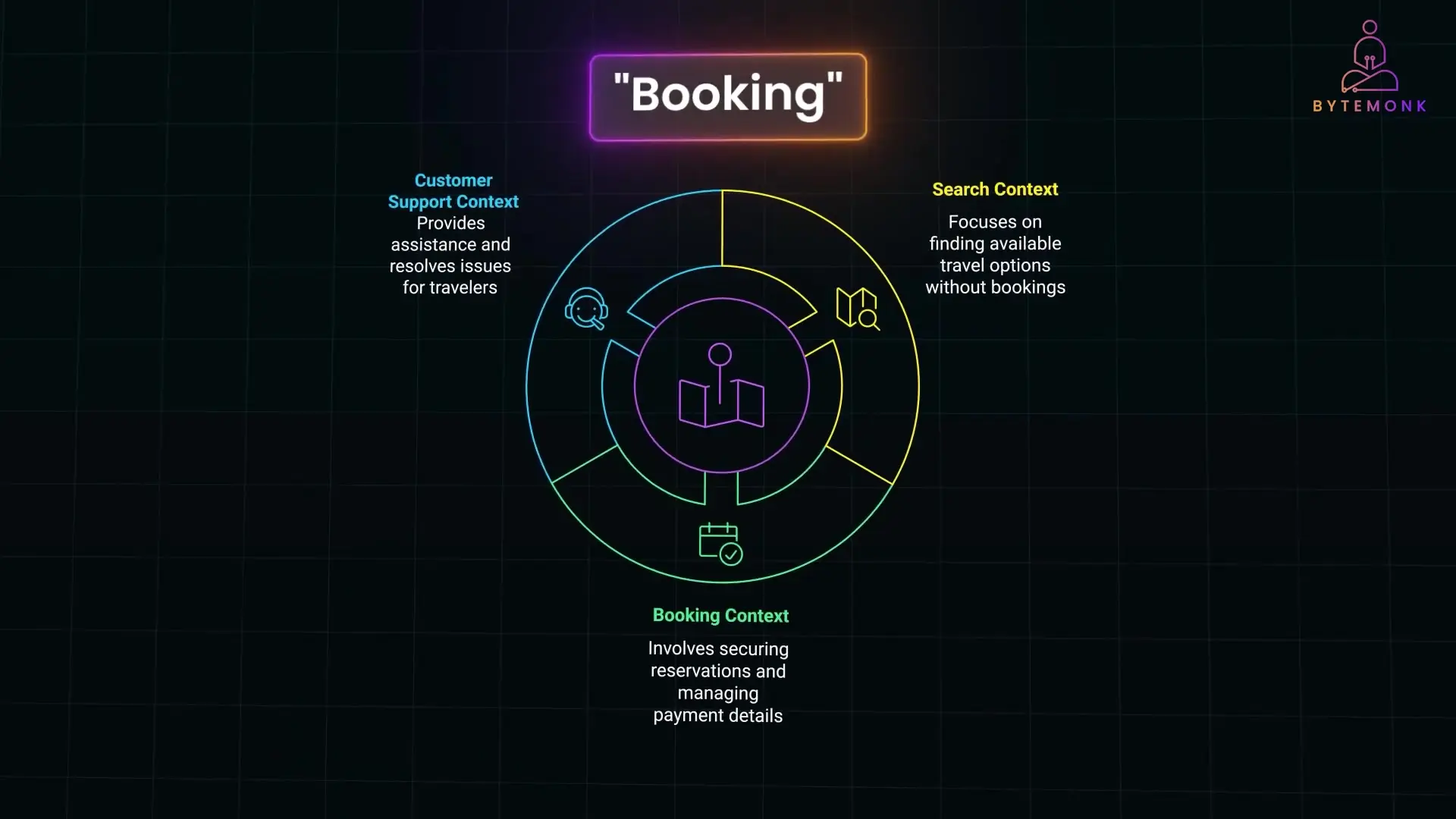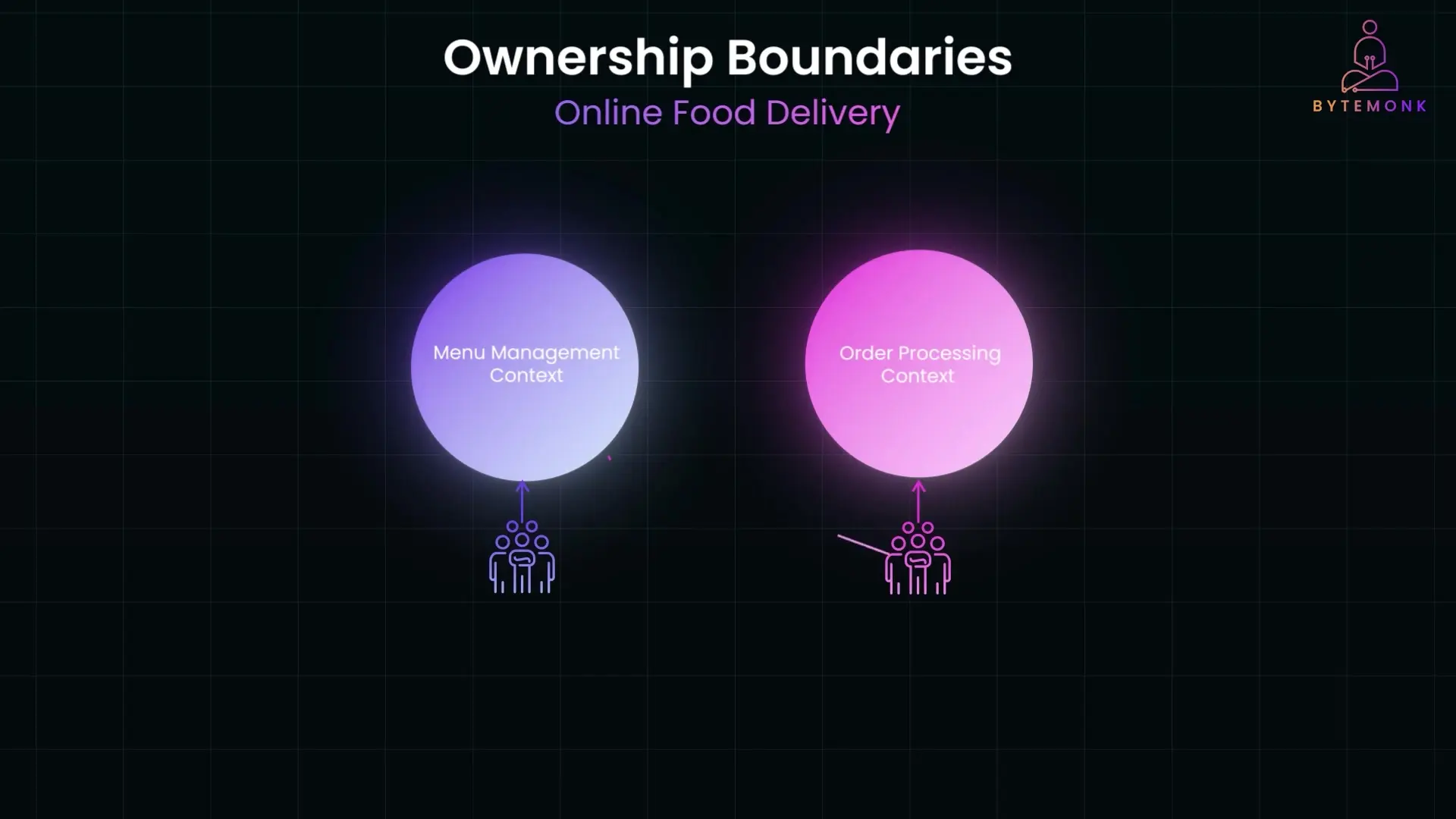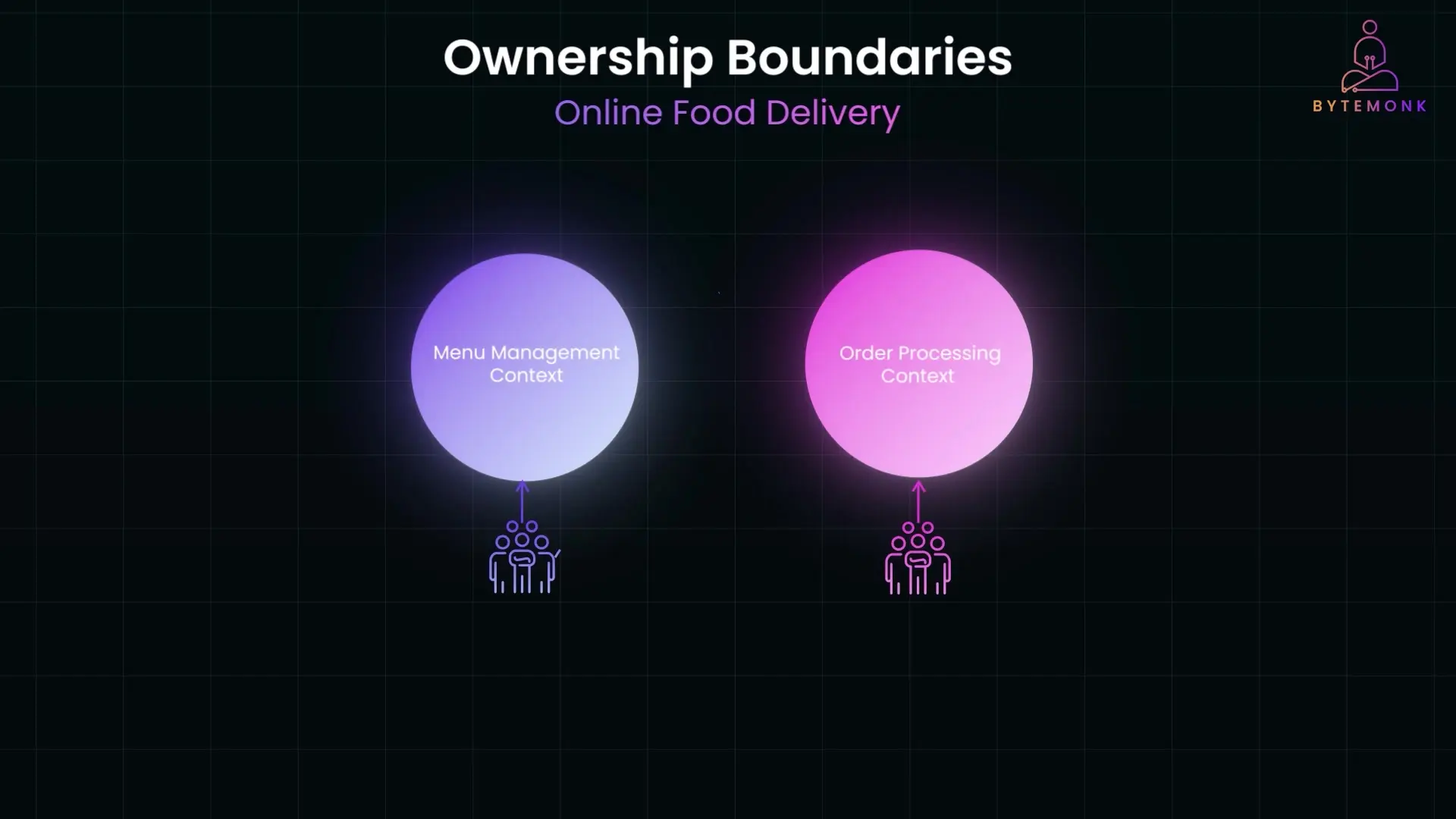
In complex software systems, a single term can mean drastically different things depending on which part of the system you're working with. This ambiguity creates confusion, misalignment between teams, and ultimately leads to software that poorly represents the business domain. Domain-Driven Design (DDD) addresses this challenge through the concept of bounded contexts—a fundamental principle that helps define clear boundaries where specific models and language apply.
The Problem: When Terms Mean Different Things
As systems grow in complexity, you'll inevitably encounter situations where the same term carries different meanings across different parts of your application. Consider an online education platform where the term 'student' appears in multiple contexts:
- For the enrollment team, a 'student' is someone who has registered for a course, with focus on enrollment details, payment status, and course selection.
- For the content team, a 'student' represents someone actively engaging with course materials, with emphasis on progress tracking, lesson completion, and quiz scores.
- For the support team, a 'student' might include anyone who reaches out for help, whether they've enrolled in a course or just created an account.
Attempting to use a single model for 'student' across all these contexts creates several problems. The model becomes bloated with attributes needed by different teams, the term loses precision as it tries to encompass multiple meanings, and changes in one area can unexpectedly impact others.
What is a Bounded Context in DDD?
A bounded context in Domain-Driven Design is a clear boundary within which a specific ubiquitous language is valid and consistent. It acts as a container for a particular part of the business domain, ensuring that terms and concepts maintain their specific meanings within that context.
Think of bounded contexts like different types of maps for the same geographical area. A subway map, road map, and topographical map all represent the same physical space but serve different purposes and highlight different features. Similarly, different bounded contexts can represent the same business entities but focus on different aspects relevant to their specific domain.

Real-World Example: Travel Booking Platform
To illustrate bounded contexts in action, consider a travel booking platform with three distinct contexts:
- Search Context: Focuses on helping users find available flights, hotels, or rental cars. The term 'booking' doesn't exist here—it's all about search results, availability, and pricing.
- Booking Context: Handles securing reservations, including payment status, confirmation numbers, and cancellation policies.
- Customer Support Context: Manages the customer's interaction history, change requests, and issues with reservations.
Each context uses the term 'booking' differently or not at all, depending on its specific focus. By maintaining these separate contexts, each team can develop and maintain models that precisely fit their needs without being burdened by irrelevant details from other contexts.
Determining Bounded Context Size and Scope
Determining the appropriate size and scope of a bounded context is a strategic decision that depends on various factors. Some contexts might need to cover a wide range of scenarios, while others can remain more focused.
However, there's a balance to strike. Dividing contexts too finely can lead to excessive integration overhead. For example, splitting a search context into separate contexts for flights, hotels, and rental cars might make development and integration unnecessarily complex. Conversely, keeping contexts too broad can lead to the same problems we're trying to avoid with bounded contexts in the first place.
Factors that might influence the decision to break a large context into smaller ones include:
- Team structure: If different teams handle different functionalities (e.g., flights vs. hotels), separate contexts might make sense.
- Update frequency: Features requiring frequent updates might benefit from their own context to allow faster iteration.
- Technical requirements: Different parts of the system might have different performance, scalability, or technology needs.
Bounded Contexts vs. Subdomains: Understanding the Difference
In Domain-Driven Design, it's important to distinguish between subdomains and bounded contexts, as they represent different aspects of the system:
- Subdomain: A distinct area of the overall business domain (e.g., ordering, shipping, inventory in an e-commerce platform). Subdomains emerge from the business itself and are discovered during analysis.
- Bounded Context: A boundary within the software where a particular model is defined and consistent. Bounded contexts are deliberately designed during the system's architectural phase.
A simple way to differentiate them: A subdomain answers the question "what is the business area or problem we're trying to solve?" while a bounded context asks "how do we design and implement that problem in software?"
While there's often a one-to-one correlation between important subdomains and bounded contexts, this isn't a rule. Sometimes multiple bounded contexts might be needed to handle one subdomain effectively, or a single bounded context might cover multiple subdomains in simpler cases.

Implementing Bounded Contexts in System Architecture
Bounded contexts define not just the scope of models but also the physical boundaries of systems. In modern architectures, each context often operates as an independent service or project with its own technology stack and evolution path.
For example, in an online food delivery platform:
- Menu Management Context: Focuses on restaurant menus, categories, and item availability.
- Order Processing Context: Manages orders, payments, and delivery tracking.
- Customer Support Context: Handles refunds, complaints, and customer queries.
Each context can use its own technology stack and evolve independently, making the system more scalable and easier to manage. Within each bounded context, you might further organize the system with logical boundaries for different aspects of that context.

Refining Ubiquitous Language with Bounded Contexts
Bounded contexts help refine the concept of ubiquitous language in DDD. Rather than being universal across an entire organization, a ubiquitous language is specific and valid only within the boundaries of its bounded context.
Within a bounded context, the ubiquitous language is tailored to describe the model relevant to that particular domain. Since a model exists to address a specific problem, the language tied to it must also stay within the scope of that problem.
This specificity ensures that communication within teams is precise and that the software accurately reflects the domain it's modeling. A ubiquitous language cannot exist or function effectively without a clear and explicit context defining its purpose and applicability.
The Pitfall of Monolithic Bounded Contexts
In theory, you could design a single model to span the entire business domain—a monolithic bounded context where all use cases and subdomains share the same model and language. While this might work for small systems, it quickly becomes impractical as complexity grows.
Issues with a monolithic approach include:
- The model becomes bloated trying to accommodate every subdomain's needs
- Different departments may have conflicting requirements
- Changes in one part of the system can ripple across the entire model
Instead of using a monolithic approach, it's better to decompose the system into smaller bounded contexts, each focusing on a specific subdomain. This separation reduces complexity, improves scalability, and fosters clearer communication.
Identifying Bounded Contexts in Your Domain
Finding the right bounded contexts for your system is more art than science, but there are several approaches that can help:
- Look for language shifts: Pay attention to when domain experts change how they talk about concepts when moving between different business processes.
- Identify team boundaries: Organizational structures often reflect natural domain divisions.
- Analyze business capabilities: Different business capabilities often map to different bounded contexts.
- Consider data ownership: Areas where data has different meanings or is managed by different groups may indicate separate contexts.
- Examine existing systems: Legacy systems and their boundaries can provide insights into natural domain divisions.
Tools like the DDD Context Canvas can help teams systematically explore and define bounded contexts by examining various aspects of the domain, including key terms, business rules, and integration points.
Conclusion: The Power of Well-Defined Boundaries
Bounded contexts are a powerful concept in Domain-Driven Design that help manage complexity by creating clear boundaries where specific models and language apply. By recognizing that the same terms can mean different things in different parts of a system and explicitly defining those boundaries, we can build software that more accurately reflects the business domain and is easier to maintain and evolve.
Whether you're building a microservices architecture or a monolithic application, the principle of bounded contexts can help you create clearer models, improve team communication, and ultimately deliver software that better serves your business needs.
Let's Watch!
Mastering Bounded Contexts in DDD: Clear Boundaries for Complex Systems
Ready to enhance your neural network?
Access our quantum knowledge cores and upgrade your programming abilities.
Initialize Training Sequence